No Pizza Party
November 10 - Tombstone, Millville, Charleston, and Fairbank, AZ, #126-2023
DISCOVERIESSNAPSHOTS
AL
11/30/2023
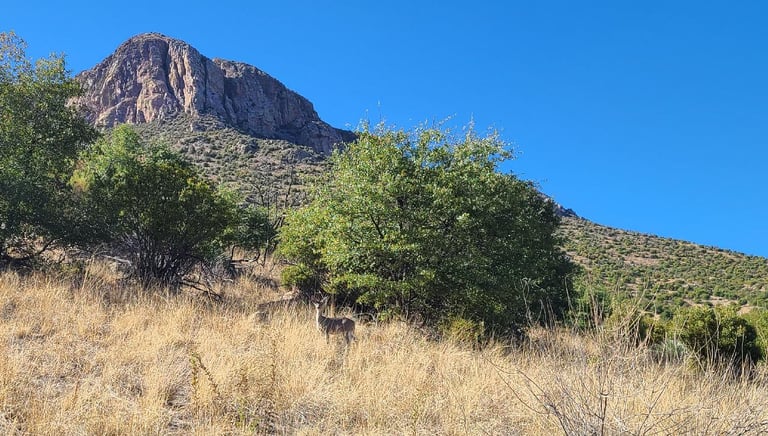

Silver and gold! Silver and gold! That old holiday song is playing through my head now as I write of the mining towns we recently visited. I wonder how challenging life must have been in any of these towns as the periods from boom to bust were very short lived.
Millville and Charleston were less than ten miles from Tombstone and were boom towns for less than 10 years. They had the advantage of being on the San Pedro River, where there was a reliable supply of water for processing ore that was mined nearby in the mountains or the dry desert. Millville was the business center as it had two mills to separate silver, while the bedroom community of Charleston is where most of the workers lived. However, once a water aquifer was found by the mining operations in Tombstone, these mills were no longer needed and the towns quickly became obsolete. Many remnants have been taken by relic seekers over the years, but the great stone walls from the mills and building foundations remain, while rusty metal cans, buckets, and a car fender litter the surroundings. The old railroad bed remains as a trail. We were amused that our friends that live here only knew of Tombstone and not of these other ghost towns. The wildlife knows about them though, as we saw a deer grazing nearby amid the protection of the trees. They weren’t putting up decorations like in the cartoons, but we haven’t either.
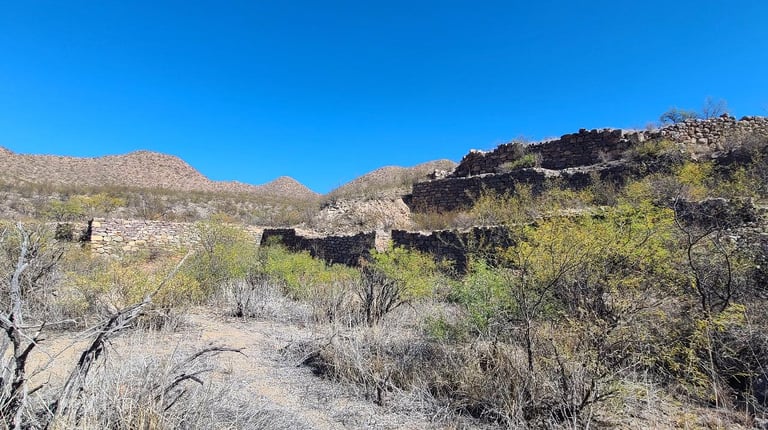

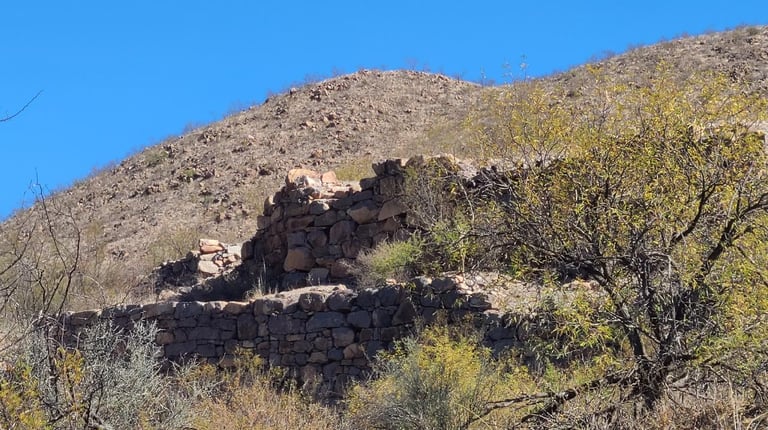

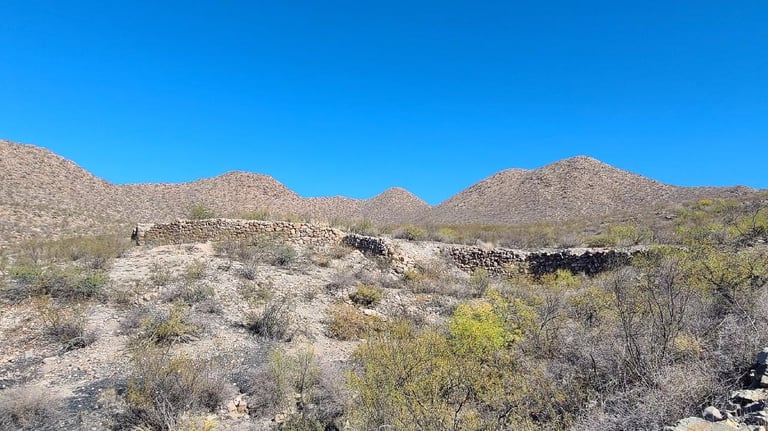

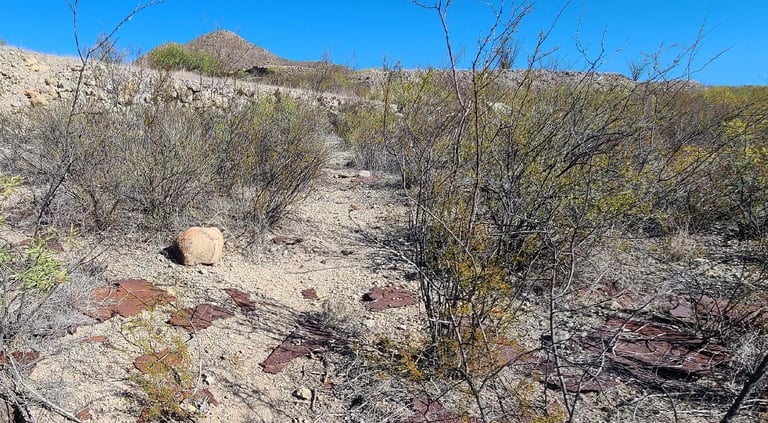

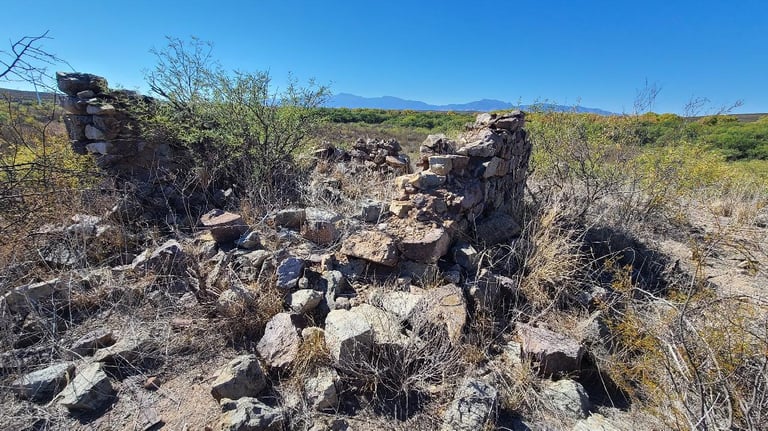

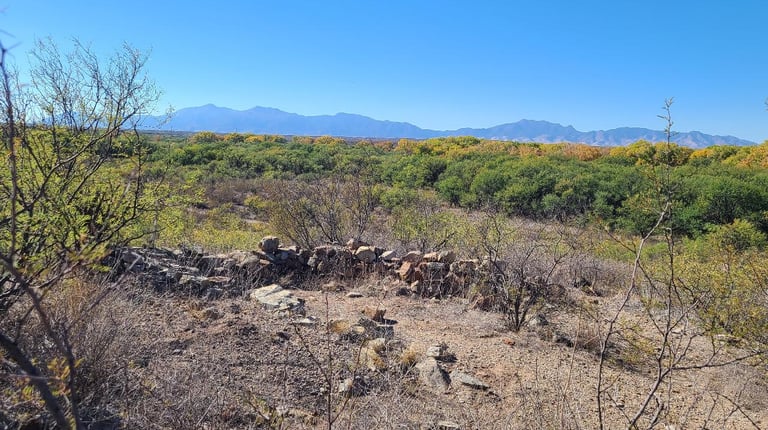

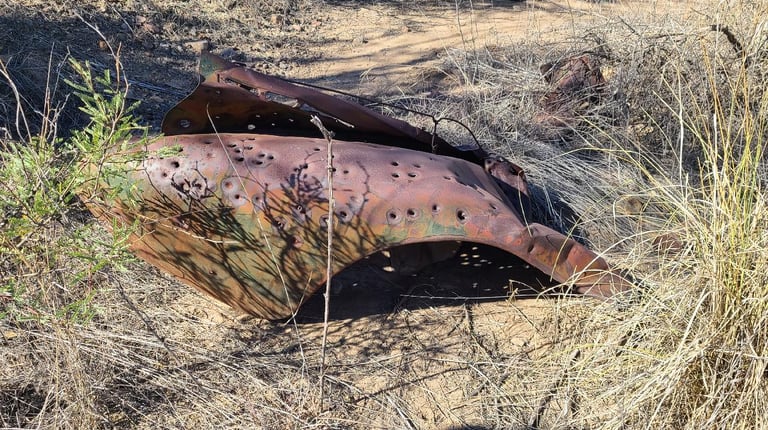

In Tombstone, they have preserved the old downtown much like it would have been in the days of the wild west. Stagecoaches wait to carry their next passengers down the dirt streets, past the storefronts and saloons, while townsfolk dressed in period garb re-enact stories from the past. The Bird Cage Theater was notorious as a place of entertainment, a brothel, and multiple deaths. It’s widely known to be haunted and still stands today. Maybe the ghosts are protecting it. Back on the street, an old mining drill seems to pay homage to the miners who lived and worked here. Many of the mines had amusing names, such as Lucky Cuss, Goodenough, Tough Nut, and Contention. Edward Schieffelin was the prospector and miner who first discovered silver here: a statue of his likeness is proudly adorned in the city park. Tom waited in the truck with the dogs alongside that park. He was glad we returned and eager to leave after enduring the loud squeaking sounds from the park swing set, which was in continuous use during our absence. I love seeing old towns like this, or what is left of them, but I like them more as actual ghost towns rather than seeing modern businesses in them.
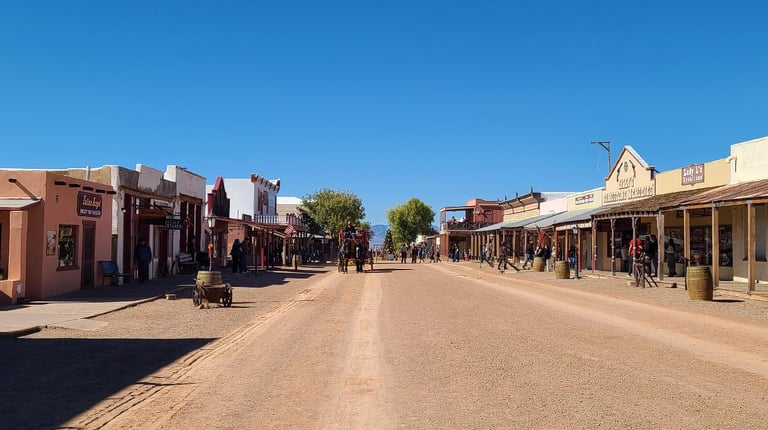

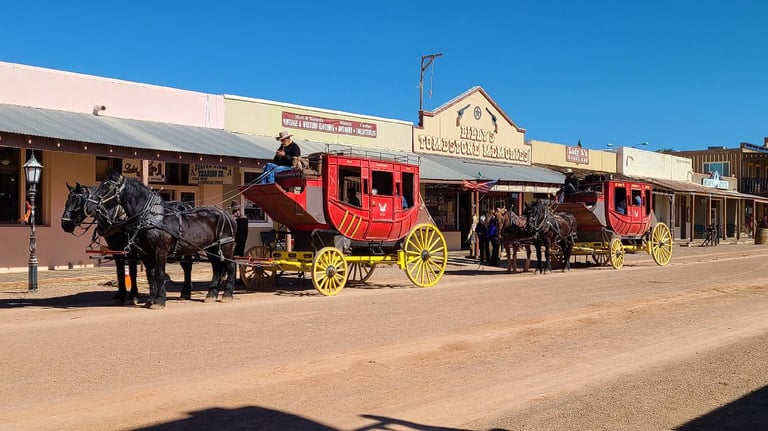

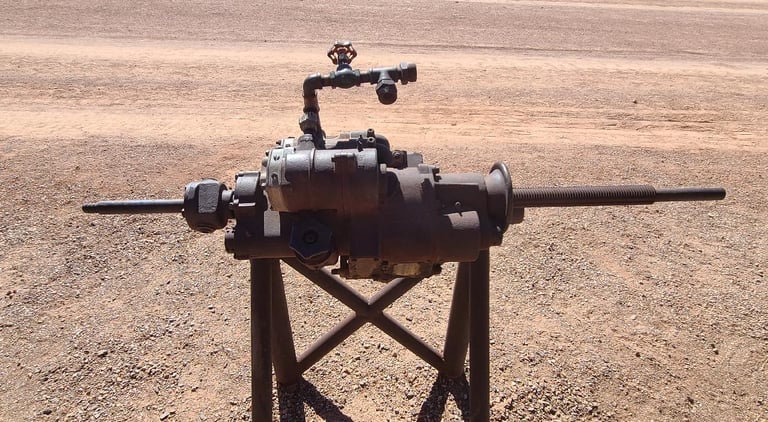

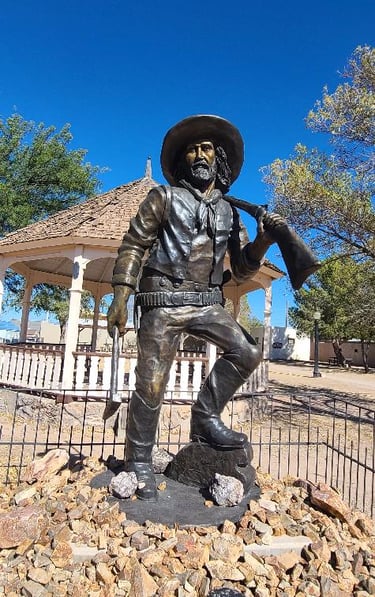

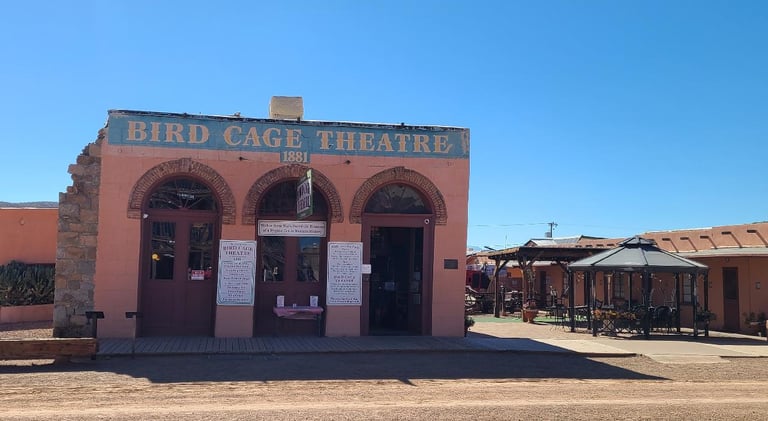

A mere ten miles to the northwest, Fairbank was a multi-railroad hub along the San Pedro River. Originally called Kendall, then Junction City, the final rename to Fairbank was by Chicago grain broker, Nathanial Kellogg Fairbank, who helped finance the railroad and organize the Grand Central Mining Company in Tombstone. Already a stagecoach stop, the railroads caused commerce to increase in the town, such as merchants, hotels, restaurants as those destined for nearby towns stopped in Fairbank. It was a generally a peaceful town, in which no one was killed, but an attempted train robbery was thwarted by the Town Sherriff after a shootout at the depot. The town boasted a two-room gypsum schoolhouse that is used as the visitor center today. Displays that chronicle the town’s history and railroad infrastructure line the walls, while the old school desks are lined up ready for class. In 1905, the townspeople chose to knock down their houses with sledgehammers, rather than leave them to the Boquilas Land and Cattle company, who evicted them. Even so, the school, post office, and many businesses survived until the early 1970’s. Until then, motorists passing by could stop at the general store to get a soda and snack. In addition to the schoolhouse, the remaining buildings include a couple homes, the general store and post office. I was impressed how well the schoolhouse has been preserved and would love to see the other building get the same care, and maybe the next time I pass through, I can stop for a drink.
These ghost towns combine history, nature, and a chance to hike. I appreciate that they are less known and visiting them is more enjoyable.
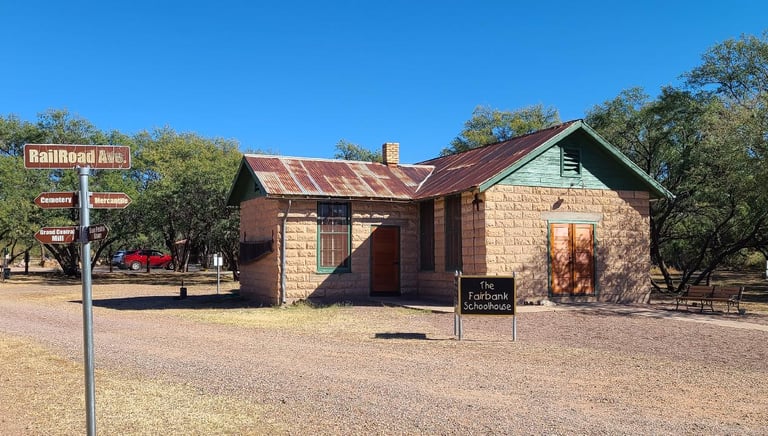

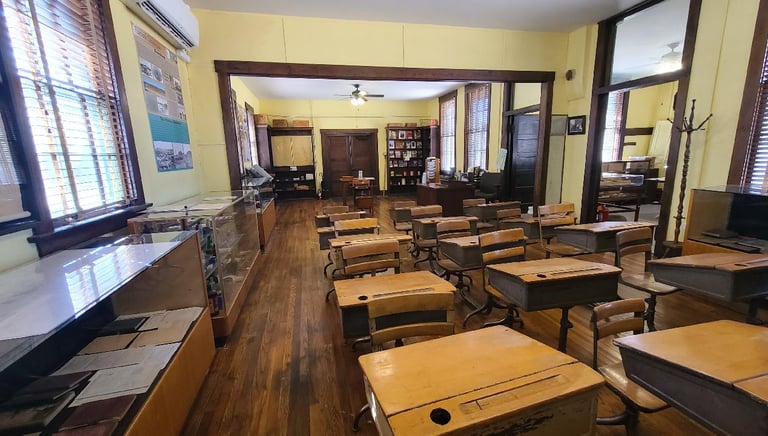

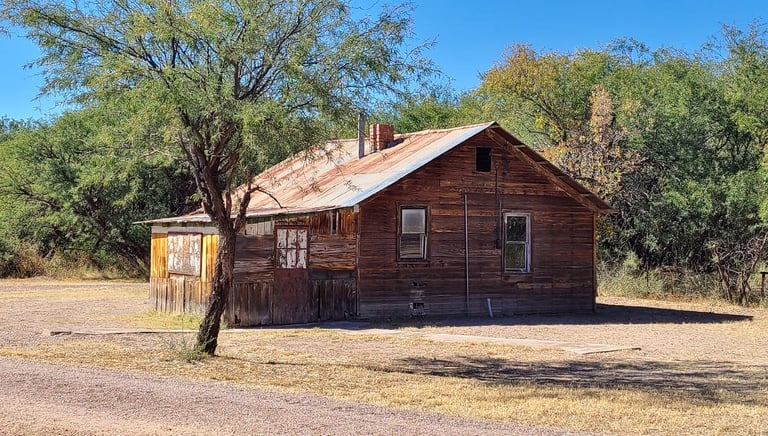

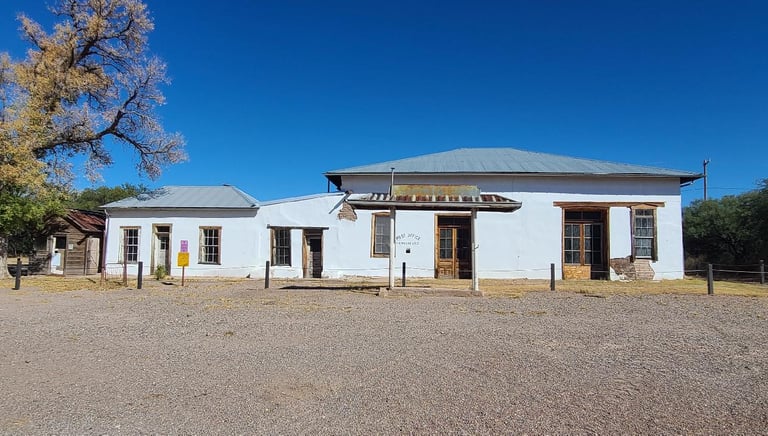

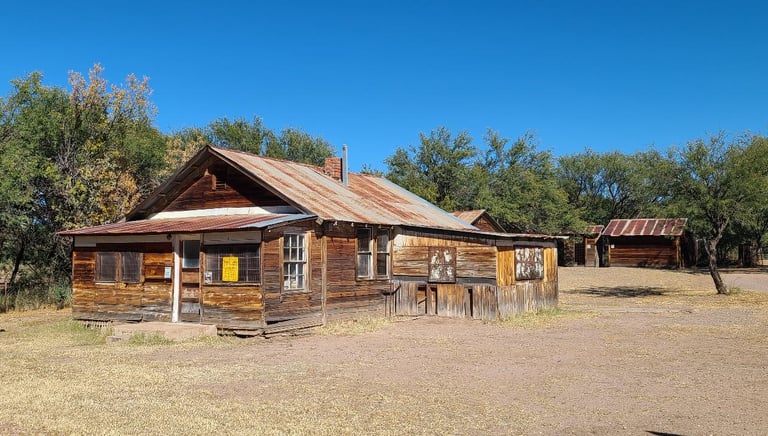

Share your comments on Facebook or email us at roadfronts@gmail.com
Subscribe for monthly updates
Current location:
